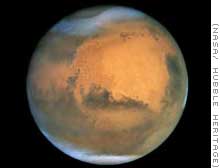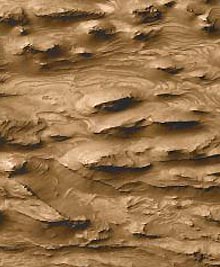

June 1, 2002 Pasadena, California - Since NASA's 1976 Viking missions, Mars has been thought by most people to be dry, dusty and dead, marked with ancient river channels and gullies that meant water had been there once upon a time. For several decades, traces of atmospheric water and some water ice along with frozen carbon dioxide at the poles had been known. But where had all the water gone that had once flowed through the rivers and canyons? Apparently, the oxidized, rusty surface has been deceiving. Less than a meter below the red rocks and dust in very cold regions, scientists have found a signal for the element hydrogen that is so strong it's assumed to be frozen H2O (water), according to this week's journal Science.
Click here to subscribe and get instant access to read this report.
Click here to check your existing subscription status.
Existing members, login below:
© 1998 - 2025 by Linda Moulton Howe.
All Rights Reserved.

